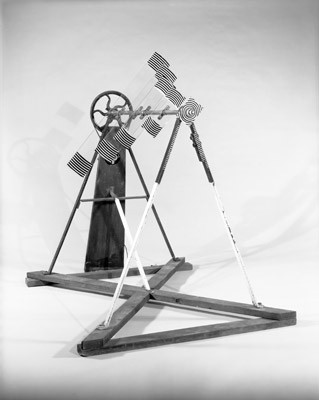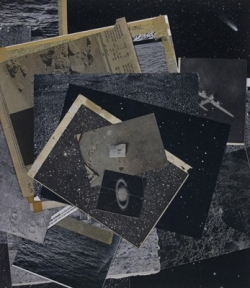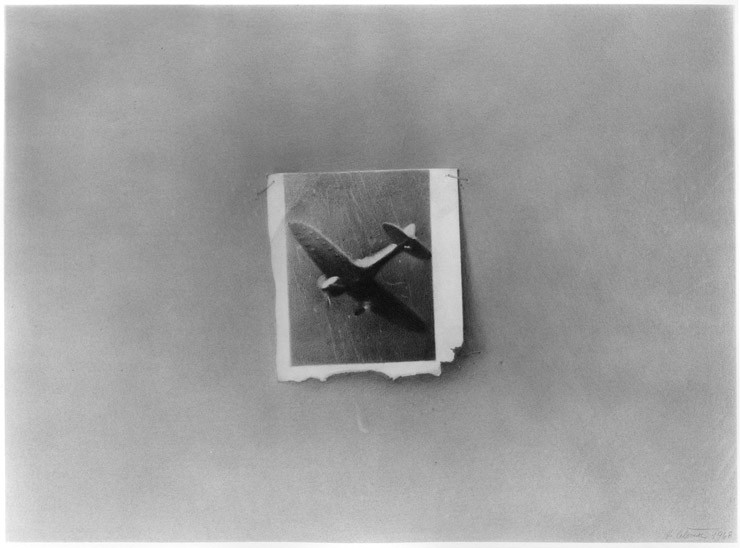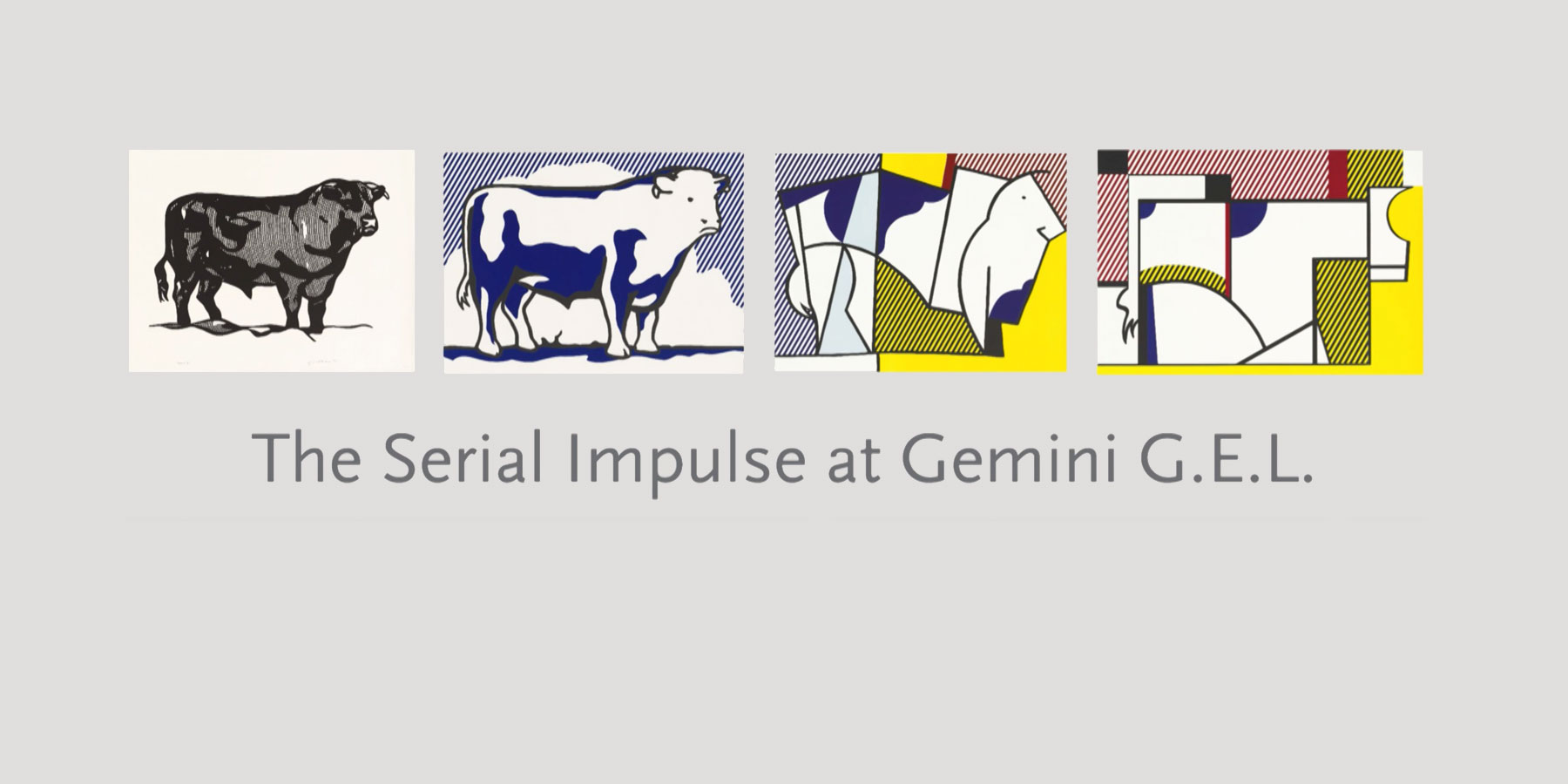The subjects in Concentric Bearings, transcribed by Vija Celmins (American, born Latvia, 1938) from magazine illustrations, are diverse, but share a common theme. The motorized axle of Marcel Duchamp’s kinetic sculpture Rotary Glass Plates (Precision Optics) spins five striped, glass blades, creating the visual impression of a blurred, concentrically striated disk. The night skies, punctuated by streaking comets or meteoroids, refer to the orbit of celestial bodies. The World War II fighter plane, damaged in an aerial dogfight, according to Celmins, was photographed as it spiraled earthward. The thematic focus of the series is gyration or revolution. In each print, individual images are aligned in close proximity along their lower edge. Arranged as a series, the “peculiar proportion and placement” (Celmins’s words) of clustered images suggest an untethering that subtly parallels the spinning blurs, falling stars, and corkscrewing airplanes.
Vija Celmins, Concentric Bearings, 1984

Marcel Duchamp, Rotary Glass Plates (Precision Optics), 1920, painted glass, iron, electric motor, and mixed media, Yale University Art Gallery, Gift of Collection Société Anonyme
“I usually tend to work in series, sort of wringing every subtle possibility out of the work . . . till I have a group and some unconscious tendency has been exhausted.” –Celmins, 2006

Vija Celmins, Untitled (Source Materials), 1999, iris print, ARTIST ROOMS National Galleries of Scotland and Tate. Acquired jointly through The d'Offray Donation with assistance from the National Heritage Memorial Fund and the Art Fund
Celmins has used several images that appear in Concentric Bearings in previous drawings, paintings, and prints. She regularly repeats and recombines images of oceans, lunar surfaces, deserts, and night-skies as part of her serial practice. The 1999 photograph Untitled (Source Materials) depicts a pile of the artist’s collection of photographs and magazine clippings of these favored subjects. The fighter plane in Concentric Bearings repeats an earlier treatment of the subject in graphite in Plane (1968) (pictured below) . In the drawing, Celmins faithfully and meticulously transcribed the jagged edge of a photographic illustration torn from a magazine, highlighting the work as a drawing of a mass media reproduction of a photograph. Painstakingly redescribing (she prefers this term over “copying” or “reproducing”) the image of the fighter plane in Concentric Bearings, she further extended the subject’s dizzying multitude of representational incarnations, from spiraling plane, to photograph, to magazine illustration, to drawing, to mezzotint. Such transformations testify to Celmins’s interest “in series... wringing every subtle possibility out of the work.”

Vija Celmins, Plane, 1968, graphite on acrylic ground, Harvard Art Museums/Fogg Museum, Margaret Fisher Fund and Joseph A. Baird, Jr. Purchase Fund, 1996. Photo: Imaging Department © President and Fellows of Harvard College
Banner image: Vija Celmins, Concentric Bearings, B (detail), 1984, aquatint, drypoint, and mezzotint, Gift of Gemini G.E.L. and the Artist, 1989. © Gemini G.E.L. and the Artist







